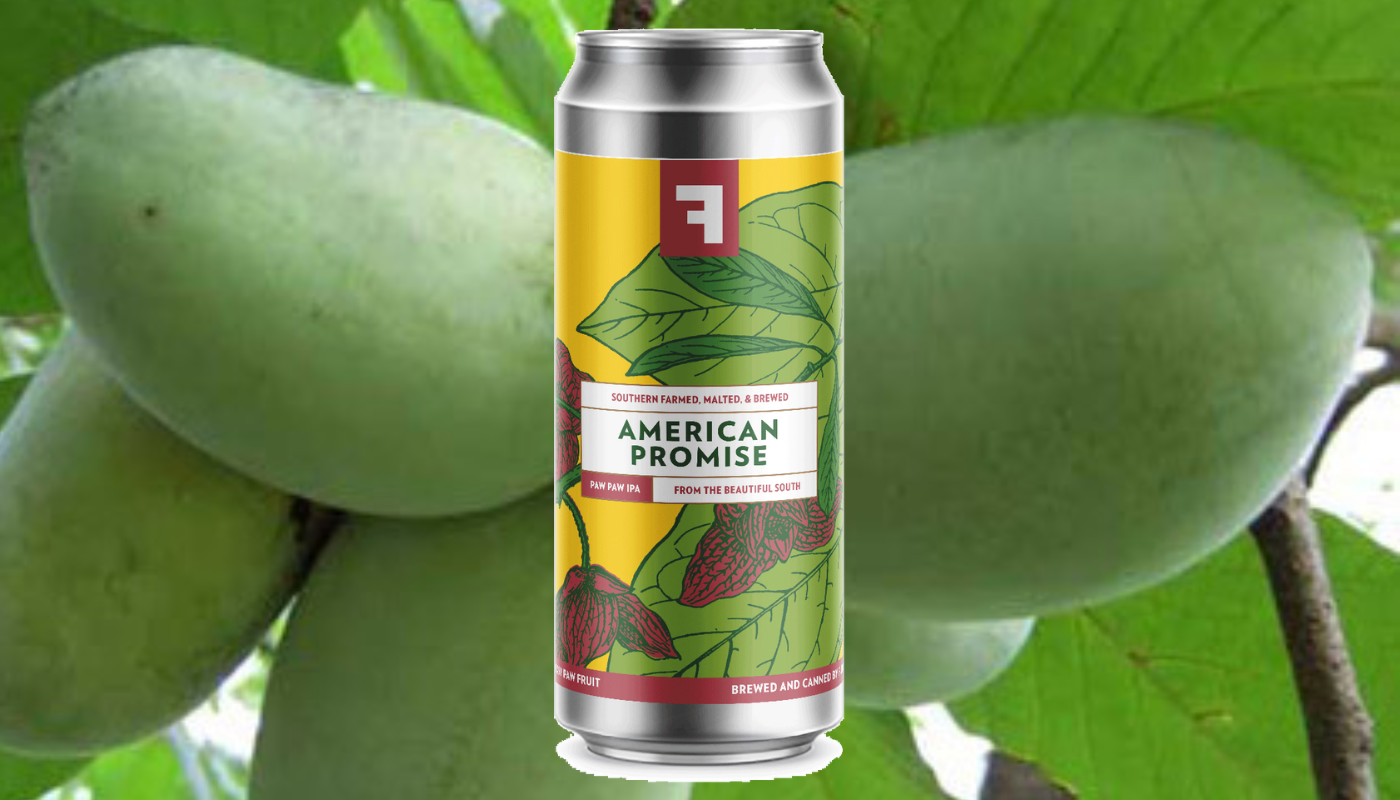There is a regionality to food, from sodas, to chilis, BBQ and beyond. Finding local flavors that either go into or compliment a beer can help forge deeper connections with local drinkers and bring others into the fold.
One such brewery that is accomplishing this goal is Fullsteam in Durham, North Carolina. Founder Sean Lilly Wilson spoke to All About Beer editor John Holl about ingredients he has used, including pawpaw.

Beverage Ingredients featured expert topic supported by WEIMA America, Inc.
Welcome to the World of Shredding & Compressing! New drainage and compression technology for the beverage industry! As the world innovates, so do we.
John Holl: When it comes to brewing, how does originality play into identity?
Sean Lilly Wilson: As the triangle of Durham, Raleigh Chapel Hill area grows and I’ve been here since the early 90s, I wanted to make sure that I could express a sense of place through beer, through events through food, in an effort to not turn into any town USA.
So express our love for land, and the wonderment of the region or love for the geography and the culture of the region through these ingredients in beer. In food too, but primarily beer. From literally from the first batch, it’s been this intention to express a sense of place, but also to express it not only through use of ingredients, but through the act of commerce, through buying things to support farmers, and foragers and agricultural entrepreneurs, to maintain that balance between agriculture and technology. A sort of old commerce and new commerce type thing.
John Holl: I hear people talk about regionality or taste of place quite a bit when it comes to the beers that you’ve made. How do you define that? How do you how do you demonstrate that?
Sean Lilly Wilson: I’ve never been interested in making a uniquely southeastern style of beer. And I’m not particularly interested in terroir in the classic sense, like the soil informs the taste. To me, it’s more of a microclimate and so subjective.
I tried to bridge it through community impact and connection to the things that are unique here. And ultimately, get people curious about ingredients to feel a sense of belonging and connectedness, wonderment and openness to the world around us.
I’m less interested in creating a style that’s a subset of a style like West Coast or New England and feeling the need to have a Southeastern. It feels late to the game on that, and it’s not not compelling for me. I don’t want to speak to how others might feel or drives them, but for me I’m more interested in using beer as a means of telling stories about this region. What makes it fun, unique and interesting.
Ultimately the people who are connecting to the people who are passionate about the ingredients. I find joy in in using beer as a pathway to connect people to these ingredients because ultimately I think the more we’re aware of our surroundings and the more we tend to it.
John Holl: Talk to me about brewing with Pawpaw. How did the idea come about and how has it evolved in your recipes?
Sean Lilly Wilson: We’ve used a lot of regional ingredients, sweet potatoes was a pretty obvious one because of North Carolina’s dominance of that farmed ingredient and because it’s an agricultural powerhouse. But then I started to be more creative and that’s where persimmon came up. And then I just discovered pawpaw. I didn’t have an epiphany moment, I just learned by tasting.
There was a pop-up tasting by the Chatham County agricultural extension and that’s where I first met [pawpaw farmer] Wynn. He was very friendly, but also cautious. I think just by the nature of this curious ingredient, this curious native fruit and there is a balance between evangelizing but also protecting his orchard. You just had to get to know him. So it was probably over five years that I slowly gained his trust by being reliable, doing what I said I was going to do, paying fair rate for the fruit and ultimately befriending him. Now that he’s passed I have a friendship with his wife Lisa. We get together and hang out or whether it’s pawpaw season or not.
As for the beer We’ve played around with pawpaw and came up with a hazy IPA that has tropical notes that does well, it’s called American Promise. We often play around with a style or two and that’s gone from a pawpaw sour to to Belgian triple to this year t’s going to be a wheat beer brewed in collaboration with the hip hop band, Little Brother. And that’s going to be a lot of fun.
We know how to use it and how to work with it. You have to be careful because it’s a diuretic so you have to know what you’re doing.
John Holl: So, it’s not just about throwing a local ingredient into the mash, you really have to know all about it first, right?
Sean Lilly Wilson: We certainly had some trial and error and some dumped batches that we didn’t get quite hot enough. It’s an expensive lesson sometimes when you’re committed to paying for an ingredient. Or even if you’re foraging for it, and it’s your time and money, it can be an expensive lesson.
John Holl: When you think about pawpaw and sweet potato, and some of these other ingredients that you’ve used, that consumers in your footprint that are aware of do you think that people are a bit more appreciative of these beers?
Sean Lilly Wilson: I think it’s very bifurcated. I think it gets down to human nature, there are naturally curious people, and there are people who are not naturally curious. And it ebbs and flows, I would say we’re not in a particularly naturally curious era. It’s coming out of COVID. And I think we want predictability.
We did the whole support local thing in the 2010s and I think societally we’re on the pendulum and we’re not in the particular curious about new things phase and I think that’s why you’re seeing the great homogenization in beer to toward the known, and that’s a response to consumer preferences, for better or for worse.
I think there’s always going to be a subset of people who are naturally curious. And we try to hire people who are that way so that they have a passion for explaining or conversing with curious customers at the bar or in the field.
This interview has been condensed and edited for clarity.
